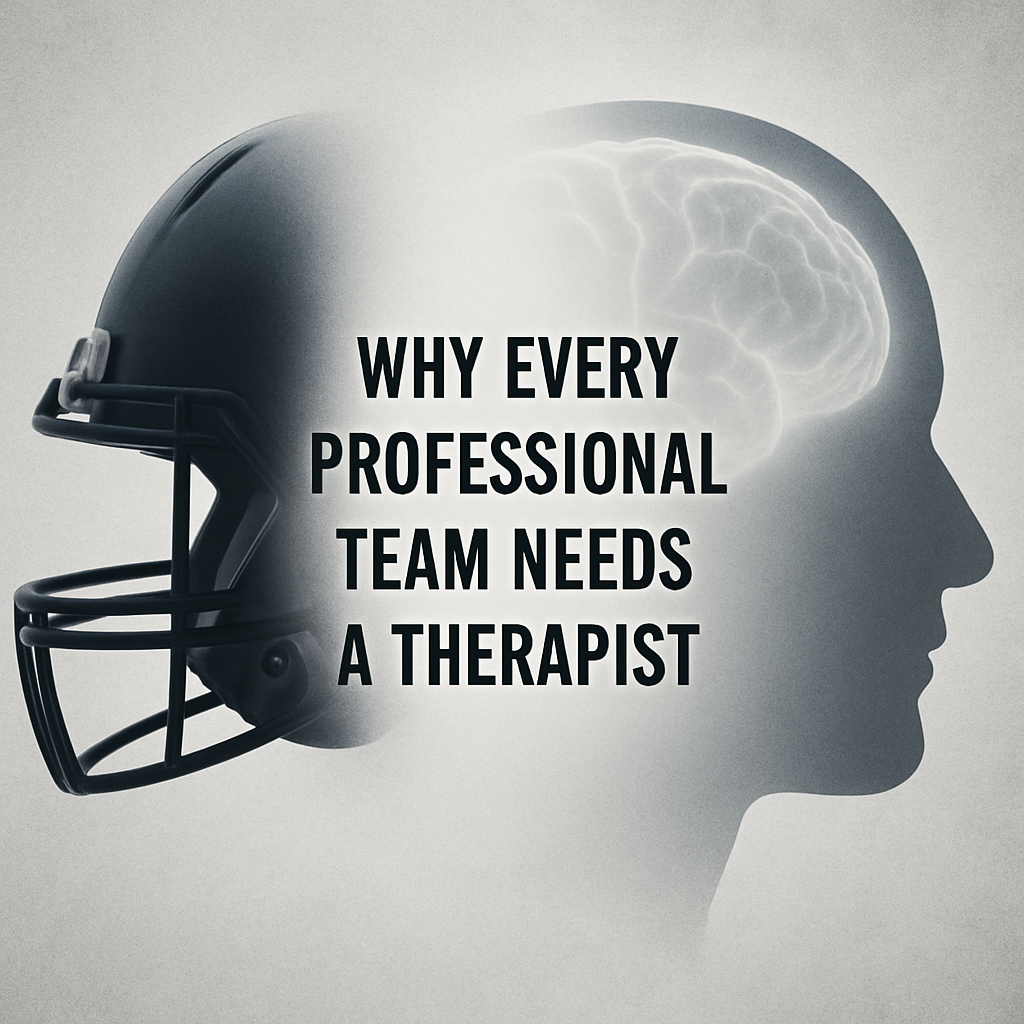When the Body Speaks the Mind
Athletes often talk about being “in the zone,” that elusive state when thought and movement fuse into one fluid rhythm. Psychologists might call it flow; mystics might call it transcendence. But underneath both is the same truth: the mind and body are never separate. Every swing, sprint, or shot is a conversation between what’s conscious and what’s unconscious—between the stories we tell ourselves and the instincts that move us.
In therapy, we watch how the body reveals what the mind resists. A tightening jaw, a restless foot, a breath held too long—these are small betrayals of feeling. In sports, those same unconscious signals can dictate performance. A tennis player gripping the racket too tightly in a moment of fear, a golfer’s shoulders stiffening under pressure, a basketball player losing rhythm after missing one free throw—all examples of the psyche quietly shaping the body’s output.
Performance as an Expression of the Self
Every athlete brings their psychology onto the field. Confidence, fear of failureFear of failure is a common type of anxiety where individuals worry excessively about not meeting ex..., perfectionism, even guilt—these internal dynamics show up in the mechanics of play. The athlete’s “form” is not just physical; it’s a psychological signature. A runner who can’t relax into their stride often carries an inner injunction to “try harder,” echoing early life patterns of striving for approval. The quarterback who thrives under pressure may have grown up in a family that rewarded calm leadership. Our history lives in our musculature.
At the highest levels of sport, talent is nearly equal. What separates the good from the great is rarely technical—it’s emotional. The capacity to recover after mistakes, to stay mentally fluid, to tolerate the anxiety of uncertainty. This is psychological flexibility, and it’s built not only in training but in self-awarenessSelf-Awareness involves recognizing one’s thoughts, feelings, and behaviors in a non-judgmental ma.... When an athlete learns the inner terrain of their fears, defenses, and desires, their game expands beyond the body—it becomes an art form.
The Unconscious in Motion
Athletic performance is one of the purest expressions of the unconscious. The body remembers what the mind forgets. Long after words fade, the nervous system retains traces of old stress, humiliation, or triumph. In that sense, competition often stirs ghosts from the past. The adrenaline of the starting line can resemble childhood anxietyChildhood anxiety refers to anxiety disorders that occur in children, including separation anxiety, ... before a parent’s judgment; the ecstasy of victory can mirror the longed-for feeling of being “enough.”
Many athletes unconsciously re-enact these dynamics through sport. They seek mastery not only of a game, but of old emotional wounds. The field becomes a stage where the psyche tries to rewrite its story—where control replaces helplessness, dominance replaces shame, and belonging replaces isolation. The irony is that when these deeper motives remain unconscious, they often sabotage the very goal they serve. A golfer chasing perfection out of fear of inadequacy tightens up at the crucial moment; a fighter who equates losing with humiliation becomes reckless under pressure.
Awareness breaks that spell. Once an athlete recognizes the emotional narrative driving their performance, they can play from a freer place—not to prove something, but to express something.
The Mind as a Regulator of the Body
Modern neuroscience keeps confirming what psychodynamic thinkers have long intuited: emotions live in the body. The vagus nerve, the stress response, and the hormonal systems form the physiological backbone of psychological states. Anxiety increases muscle tension and disrupts fine motor control; calm focus synchronizes breath and heartbeat into efficient movement.
The best athletes don’t suppress emotion—they regulate it. They learn to ride the wave of adrenaline rather than drown in it. This isn’t just mental toughness; it’s emotional attunement. Through repetition, mindfulnessMindfulness in CBT involves focusing on the present moment without judgment. It helps individuals be..., and insightInsight refers to the understanding and awareness clients gain about their thoughts, feelings, and b..., they develop a kind of inner proprioception—an awareness of their psychological posture. Just as they sense when their weight is off balance, they sense when their mind is.
Peak performance is the meeting point of attuned mind and responsive body. When either drifts out of sync, mistakes multiply. When they align, the athlete transcends the self, becoming both doer and done.
Training the Inner Game
True athletic development requires the courage to look inward. Coaches can drill form and strategy, but only introspection can train the unseen forces that drive consistency: motivation, self-talk, emotional regulationEmotional regulation refers to the ability to manage and respond to emotional experiences in a healt..., resilienceResilience is the ability to adapt and recover from adversity and trauma. Building resilience is ess.... A therapist or performance psychologist working from a depth-oriented lens helps athletes understand not just how they perform, but why they perform the way they do.
For some, that means confronting perfectionism or fear of failure; for others, it means learning to access aggression, passion, or play. Therapy, like training, builds tolerance for discomfort—the ability to stay present under internal pressure. Over time, that emotional stamina becomes the foundation of physical performance.
Integration as Mastery
The mind-body connectionThe Mind-Body Connection refers to the relationship between mental and emotional processes and physi... isn’t just about optimizing performance—it’s about wholeness. The more integrated the self, the smoother the movement. When the inner world is divided—when self-doubt, shame, or old conflicts split the psyche—the body carries that fragmentation. The truly great athletes move as one continuous organism, free from inner contradiction. Their body is not an instrument to be controlled but an extension of self to be expressed.
That’s why some of the most awe-inspiring moments in sport feel spiritual. They are glimpses of integration—moments when the athlete disappears, and something larger takes over. It’s not just talent or training; it’s alignment. The body, the mind, and the unconscious all moving in rhythm.
Final Thoughts
Athletes spend years refining their mechanics, but few are taught to refine their inner world. Yet, the greatest performance edge is not in the gym or the playbook—it’s in the psyche. The mind and body are not two systems to be balanced, but one living, communicating whole.
To elevate the game is to elevate the self.
And when that happens, victory becomes more than a scoreboard—it becomes a state of being.




